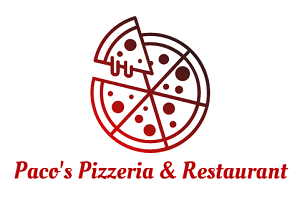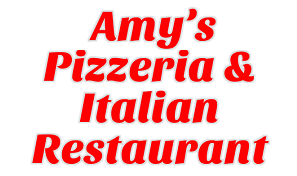Pierogies
- Paco's Pizzeria & RestaurantOpen Now$1.00 Delivery5.0
- Southampton Pizzeria & Restaurant
 Open Now$3.00 Delivery4.9
Open Now$3.00 Delivery4.9 - Amy's Pizzeria & Italian RestaurantOpen Now$2.65 - $5.00 Delivery5.0
- Pomodorino Pizza
 Open Now$2.00 Delivery4.8
Open Now$2.00 Delivery4.8 - Spatola's Pizza
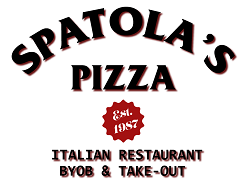 Open Now$3.00 Delivery5.0
Open Now$3.00 Delivery5.0
- Paco's Pizzeria & RestaurantOpen Now$1.00 Delivery5.0
- Southampton Pizzeria & Restaurant
 Open Now$3.00 Delivery4.9
Open Now$3.00 Delivery4.9 - Amy's Pizzeria & Italian RestaurantOpen Now$2.65 - $5.00 Delivery5.0
- Pomodorino Pizza
 Open Now$2.00 Delivery4.8
Open Now$2.00 Delivery4.8 - Spatola's Pizza
 Open Now$3.00 Delivery5.0
Open Now$3.00 Delivery5.0 - Spatola's Pizza & Italian Restaurant
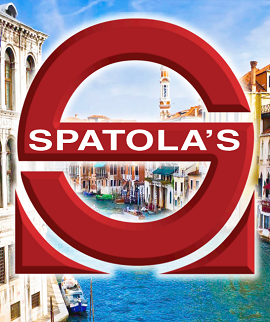 Open Now$2.99 - $4.00 Delivery4.7
Open Now$2.99 - $4.00 Delivery4.7 - Bella Roma Pizza
 Open Now$2.00 Delivery4.8
Open Now$2.00 Delivery4.8 - Penllyn PizzaOpen Now$2.00 Delivery5.0
- Perkasie Pizza & Pasta
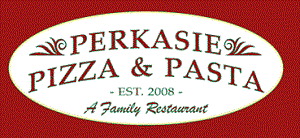 Open Now$4.95 Delivery4.8
Open Now$4.95 Delivery4.8 - Palermo's Italian Grill
 Open Now$2.00 Delivery5.0
Open Now$2.00 Delivery5.0 - HG Wood Fired Pizza & Family RestaurantOpen Now$4.95 Delivery4.8
- Mystic Restaurant
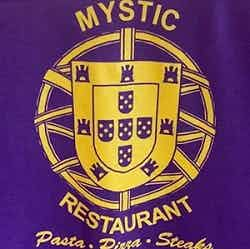 Open Now$1.00 Delivery4.9
Open Now$1.00 Delivery4.9 - Five Points Pizza
 Open Now$2.00 Delivery4.9
Open Now$2.00 Delivery4.9 - Nicola's Pizza
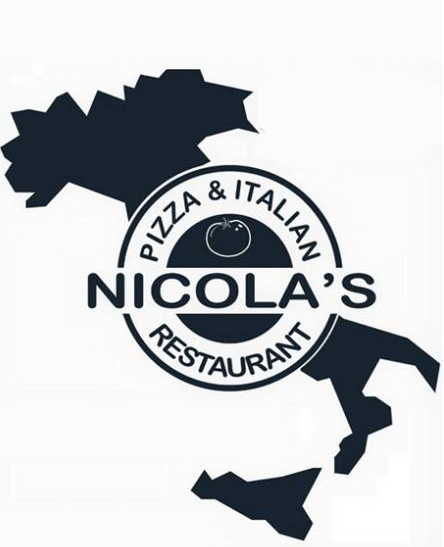 Open Now$2.00 - $5.00 Delivery5.0
Open Now$2.00 - $5.00 Delivery5.0 - Pizza Como
 Open Now$2.00 - $6.00 Delivery5.0
Open Now$2.00 - $6.00 Delivery5.0
Best Pierogies in Philadelphia
- Baby Boss Pizza & Grill
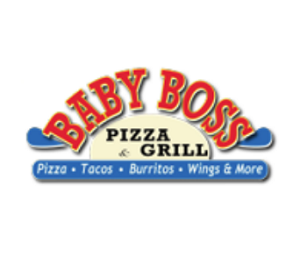 Open Now$2.00 Delivery4.9
Open Now$2.00 Delivery4.9 - Big Ben PizzaOpen Now$2.99 Delivery4.9
- Angelo's Pizzeria & Family Restaurant
 Open Now$3.00 Delivery5.0
Open Now$3.00 Delivery5.0 - Pizza FreshOpen Now$3.00 Delivery4.9
- Mega Quality Pizza Restaurant
 Open Now$2.00 Delivery4.5
Open Now$2.00 Delivery4.5
- Baby Boss Pizza & Grill
 Open Now$2.00 Delivery4.9
Open Now$2.00 Delivery4.9 - Big Ben PizzaOpen Now$2.99 Delivery4.9
- Angelo's Pizzeria & Family Restaurant
 Open Now$3.00 Delivery5.0
Open Now$3.00 Delivery5.0 - Pizza FreshOpen Now$3.00 Delivery4.9
- Mega Quality Pizza Restaurant
 Open Now$2.00 Delivery4.5
Open Now$2.00 Delivery4.5 - Mr P Pizza & Pasta
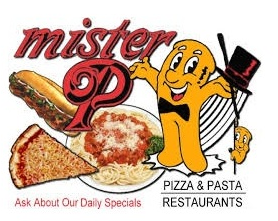 Open Now$3.00 Delivery4.5
Open Now$3.00 Delivery4.5 - Fila's Pizza
 Open Now$1.50 Delivery4.8
Open Now$1.50 Delivery4.8 - Ed's Buffalo Wings & PizzaOpen Now$3.00 Delivery4.8
- Big Al's Italiano
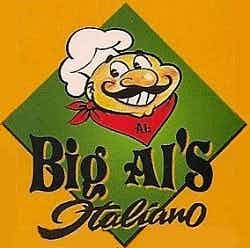 Open Now$2.25 Delivery4.7
Open Now$2.25 Delivery4.7 - Artigiano Pizza
 Open Now$2.00 Delivery4.9
Open Now$2.00 Delivery4.9 - Domenic's Pizza
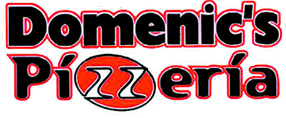 Open Now$3.00 - $4.00 Delivery4.5
Open Now$3.00 - $4.00 Delivery4.5 - Pina's PizzaOpen Now$2.50 Delivery4.8
- Sam's Pizza & SubsOpen Now$2.00 Delivery4.3
- The Original Venice Pizza
 Open Now$2.25 Delivery5.0
Open Now$2.25 Delivery5.0 - Fishtown PizzaOpen Now$2.00 - $3.00 Delivery5.0
Newest Pierogies Pizza Places on Slice
- Vitale's Italian Restaurant
 Open Now$1.95 Delivery4.6
Open Now$1.95 Delivery4.6 - Dominick's PizzaOpen Now$3.00 Delivery4.7
- Gardenville Pizza and DeliOpen Now$3.00 Delivery5.0
- Rialto PizzaOpen Now$3.00 Delivery4.8
- Little SicilyOpen Now$4.95 Delivery4.9
- Vitale's Italian Restaurant
 Open Now$1.95 Delivery4.6
Open Now$1.95 Delivery4.6 - Dominick's PizzaOpen Now$3.00 Delivery4.7
- Gardenville Pizza and DeliOpen Now$3.00 Delivery5.0
- Rialto PizzaOpen Now$3.00 Delivery4.8
- Little SicilyOpen Now$4.95 Delivery4.9
- F Italian PizzaOpen Now$4.95 Delivery
What Are Pierogies?
Pierogies are soft dumplings stuffed with a variety of savory or sweet fillings. They can be boiled or fried and served with sauce or cream on top or the side. They're definitely what you call comfort food.
The basic ingredient is dough made from flour or mashed potatoes. Or sometimes a combination of both. The dough is stuffed with a pre-cooked filling, which can be anything from meat and vegetables to cheese and fruit.
The Secret
Just by looking at the pierogies, you can’t say anything about what’s inside. But once you bite, you’ll unravel their secret.
What makes them so popular and loved is their versatility. They can be in a semi-circle or a rectangle shape depending on the way the dough is cut. After it is kneaded by local chefs, it is cut into circles or squares. These are later filled with the good stuff that goes inside.
The filling goes in a pocket made of dough, which is carefully sealed. This is so the filling will remain inside when the pierogies are boiled or fried.
The secret is to make the dough firm enough, so it won’t fall apart during the cooking process. But at the same time, it needs to be light, soft, and chewy.
Apart from the shape, another great thing about this dish is that it can be both sweet and savory. Served with different toppings and sauces, there is an option for everyone’s preferences.
The Filling
Thus, savory pierogies can be filled with ground, pre-cooked meat, mushrooms, onion, cheese, mashed potatoes, and sauerkraut.
Additionally, in the US there is a local twist to the savory version. This is with fillings like cheddar cheese, bacon, jalapeno peppers, chicken, and spinach.
The sweet ones however have fruit fillings. The most common fruit choices are strawberries, blueberries, plums, cherries, or saskatoon berries. The fruit inside can be used fresh or as a fruit jam.
The Sauce
But what gives them that final, satisfying taste are the sauces served with both sweet and savory dumplings.
The savory pierogies can be simmered in butter. Or simply served with some sour cream and chives, fried bacon, bacon bits, mushroom, and dill sauce.
This sweet variant can be served with applesauce and sour cream too.
Where do pierogies come from?
Even though there are many origin stories and legends, it is believed that they were born in Central or Eastern Europe.
Few legends are entwined around the Polish Dominican priest Hyacinth of Poland.
After a storm destroyed all crops, he told the starving people to pray and the next day all the crops rose back up.
So as a gratitude for the priest, the people made him pierogies. Another legend says he fed the people with them during a famine.
But the pierogies were most probably imported to Poland in the 13th century. This was from their east neighbor Kievan Rus (today known as Ukraine).
It was perhaps thanks to the above-mentioned Hyacinth who became the patron saint of this food.
Whereas some believe the pierogies originate in Italy or Turkey, still most people connect them with Poland and other central, eastern, or south European countries.
The word pieróg is a generic term for filled dumplings. The plural form is pierogi, but sometimes native English speakers add their plural to the word, and thus we have the colloquial term pierogies.
The term pieróg derives from an old Slavic word meaning feast.
However, there are varieties typical for some countries. Examples are the Ukraine varenyk or West and East Slavic pirog which indicate the method of cooking them, by boiling, baking, or frying.
Today their popularity among Americans and Canadians is thanks to the Central and Eastern European immigrants who brought the pierogies with them.
First, they prepared the dumplings in their homes. Then the recipe was spread mostly among ethnic restaurants.
But post-WWII and especially in the 1960s, they were a common meal. And they even got their frozen version in the stores and markets.
Today they are known and loved by many. But they are particularly common in cities with large Polish and/or Ukrainian populations. These are places such as Chicago, Pittsburgh, and New York, including New Jersey.
Furthermore, pierogies are widely spread and celebrated in different cities in Pennsylvania and Indiana. And their popularity even extends up to Canada.
What are the different types of pierogies?
Another great usage of these special dumplings is their lasagna and casserole variations.
Pierogies Lasagna
As the name suggests, these are made with lasagna noodles. The resemblance is in the ingredients typically used as pierogi fillings, such as mashed potatoes, cheddar cheese, ricotta, onions, and bacon.
The result is a comforting, creamy lasagna that tastes like its dumpling counterpart.
Pierogies Casserole
For the casserole variety, delicious pierogi are baked together with sausages, sour cream, cream cheese, onions, and Cheddar cheese to a mouthwatering fusion dish.
The Frozen Pierogies
Although at their best when they are fresh, some local chefs make a larger batch of pierogies to save you time when ordering. These are usually pre-cooked, so it takes a little time for boiling, baking, or simmering to be perfectly done.
The Polish Pierogies
The traditional Polish pierogies are made of simple ingredients - flour, water, and sometimes an egg for the dough, and mashed potatoes and cheese, for the filling.
They can be boiled shortly, just enough to be cooked but not become soggy, or slightly fried on each side.
Ground meat, mushrooms, and cabbage make for another popular filling for Polish pierogies. In Poland, they are eaten for many holidays and on different occasions.
They even have an annual Pierogies Festival in Kraków, where around 30.000 pierogies are eaten daily!
Are pierogies high in calories?
In a serving of 3 pieces of pierogies (114g), there are around 222 calories. This includes 7g of total or 9% of the daily value based on a 2000-calorie diet.
Additionally, there are 4.6 g of cholesterol (2%), 540mg of sodium (23%), 34g of total carbohydrates (12%), and 6g of protein.
Finally, we got 40mg of calcium (3%), 1.4mg of iron (8%), and 122mg of potassium (3%).
Where can I find pierogies near me?
When in Pennsylvania, order some homemade pierogies from Nino’s Pizzarama. You can choose classic ones with sour cream on the side or go for Texas Pierogies with cheddar cheese, mozzarella, and bacon.
And if you're in New Jersey then Nicola's Pizza is the right place for you. This famous eatery in Califon is open 7 days a week. Plus, you can order takeout or delivery via Slice, and their catering includes pierogies, too.

Testimonials
Pizza, pierogies, and especially the cheesesteaks were cooked PERFECTLY! Food was delivered on time and the driver was friendly.
Lorenzo's Pizza Review
People Also Ask:
Browse More Dishes
EVEN MORE DISHES NEAR YOU
Chicken Breast Sandwich
•Sausage Sandwich
•Veal Parmigiana Sandwich
•Juice
•Eggplant Pizza
•Grilled Chicken Wrap
•Prosciutto Sandwich
•Roasted Beet Salad
•Egg Salad Sandwich
•Turkey Pita
•Minestrone Soup
•Chicken Quesadilla
•Caramel Cheesecake
•Quesadilla
•Fish Tacos
•Ham Calzone
•Chicken Broccoli Alfredo
•Vegetable Roll
•Chicken Parmesan Pizza
•Breakfast Pizza
•Meat Lover Calzone
•Meatballs
•Shrimp Alfredo
•Chocolate Cheesecake
•Meat Pizza
•Shrimp Rolls
•Tartufo
•Sicilian Pizza
•Baked Ziti Pizza
•Cheese Pie
•Salsa
•Grilled Chicken Caesar Salad
•Cuban Panini
•Italian Sausage Sandwich
•Cheesesteak Sub
•Taco Pizza
•Chopped Steak
•
